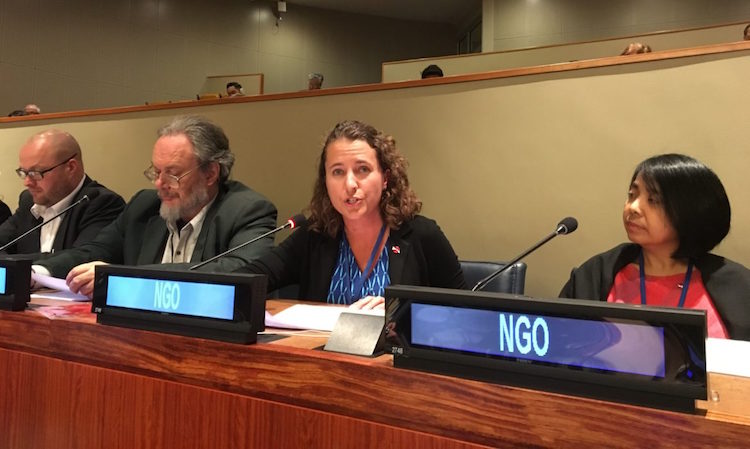By Devendra Kamarajan
NAIROBI (IDN) — When the COVID-19 pandemic crisis started, most people were extremely pessimistic. They thought that the region would drown in terms of trade declining catastrophically. But a new report reveals that the East Africa Community economies — Burundi, Kenya, Rwanda, South Sudan, Tanzania, and Uganda — have, by global standards, proven to be relatively resilient.
The report was launched on February 17 by UN Economic Commission for Africa (UNECA), TradeMark East Africa (TMEA) and African Economic Research Consortium (AERC).
The Office for Eastern Africa of the UN Economic Commission for Africa (UNECA) serves 14 countries: Burundi, Comoros, Democratic Republic of Congo, Djibouti, Ethiopia, Eritrea, Kenya, Madagascar, Rwanda, Seychelles, Somalia, South Sudan, Tanzania and Uganda.
TMEA has its headquarters in Nairobi, Kenya, with operations and offices in EAC-Arusha, Burundi (Bujumbura), Tanzania (Dar es Salaam), Democratic Republic of Congo (Bukavu), Ethiopia (Addis-Ababa), Malawi, Zambia, South Sudan, Uganda (Kampala) and Rwanda (Kigali).
TMEA is an aid-for-trade organisation established in 2010, with the aim of promoting prosperity in East Africa through increased trade. It operates on a not-for-profit basis and is funded by the development agencies of the following countries: Belgium, Canada, Denmark, Finland, Ireland, Netherlands, Norway, United Kingdom, United States of America as well as the European Union.
African Economic Research Consortium established in 1988, is a premier capacity building institution in the advancement of research and training to inform economic policies in sub-Saharan Africa.
Entitled “Waving or Drowning? The Impact of the COVID-19 Pandemic on East African Trade”, the report notes that declines in imports broadly reflected the adverse trade performance of the EAC’s main trading partners during the early phases of the pandemic in April and May 2020.
But the imports of all the EAC Partner States subsequently recovered to pre-pandemic levels by the second half of 2020, after governments’ lockdown restrictions were eased and a broader global trade recovery started to take place.
Nonetheless, despite showing resilience, COVID-19 has reversed some of the gains made in trade facilitation, says the report.
Immediately after COVID-19 outbreak, the ship dwell time at Mombasa port increased by 48% and Berth time increased by 52%. Cargo transit from Mombasa Port to Malaba (the border between Kenya and Uganda) increased from 7 days to 11 days by the second quarter of 2020. The time taken to transport goods via the Mombasa-Busia route was nearly three times higher.
On the Central Corridor, the transit time from Dar-es-Salaam to various cities in the neighbouring countries more than doubled. The marked increase in transit times highlights the challenges at border points.
Another major casualty from the crisis has been informal cross-border trade, which has struggled to recover from the regional restrictions on cross-border travel.
For example, data from Uganda suggests that even the reopening of Uganda’s borders in September 2020 did not revive informal cross border trade. The resultant impacts include loss of income in border communities and a reversal of women economic empowerment
The report provides a set of recommendations for public and private sector to steer the region’s economies to greater stability post COVID-19. One of the key recommendations is for the EAC Partner States to diversify their economies.
This because excessive commodity export dependence still exposes the regional economy to unnecessary risks. The African Continental Free Trade Area (AfCFTA) could be instrumental in making this happen.
The report urges policy makers to support development and implementation of technological innovations to address the bottlenecks that have arisen during the crisis along the Northern and Central Corridor.
The blockages include the Regional Electronic Cargo Tracking System which has enabled issuance of jointly recognised health certificate by EAC partner states thus eliminating the need for multiple tests for truck drivers.
This has contributed to reduction in time taken to transport goods. Other technological innovations that support paperless trade will deliver time and cost benefits to the region post-COVID19 as well as support regional integration.
The resilience exhibited by EAC intra-regional trade and the opportunities this has revealed should power efforts to strengthen regional value chains (RVCs), especially through implementation of African Continental Free Trade Area (AfCFTA), says the report.
From a trade perspective, the region is still not out of the woods. The pandemic’s rapidly evolving nature and its spill over effects may still present a significant threat to trade and commerce within the EAC over the coming years. Partner States must continue with a tightly coordinated approach to addressing the pandemic’s challenges.
In terms of sectors, the report documents that while regional manufacturing held up quite well, in fact it has been some primary sectors which have done best, leading the region to an increased dependence on commodities — “something which is not of course desirable from a long-term perspective”. [IDN-InDepthNews – 21 February 2021]
Image credit: UN Economic Commission for Africa.
IDN is flagship agency of the Non-profit International Press Syndicate.
Visit us on Facebook and Twitter.
This article is published under the Creative Commons Attribution 4.0 International licence. You are free to share, remix, tweak and build upon it non-commercially. Please give due credit.

